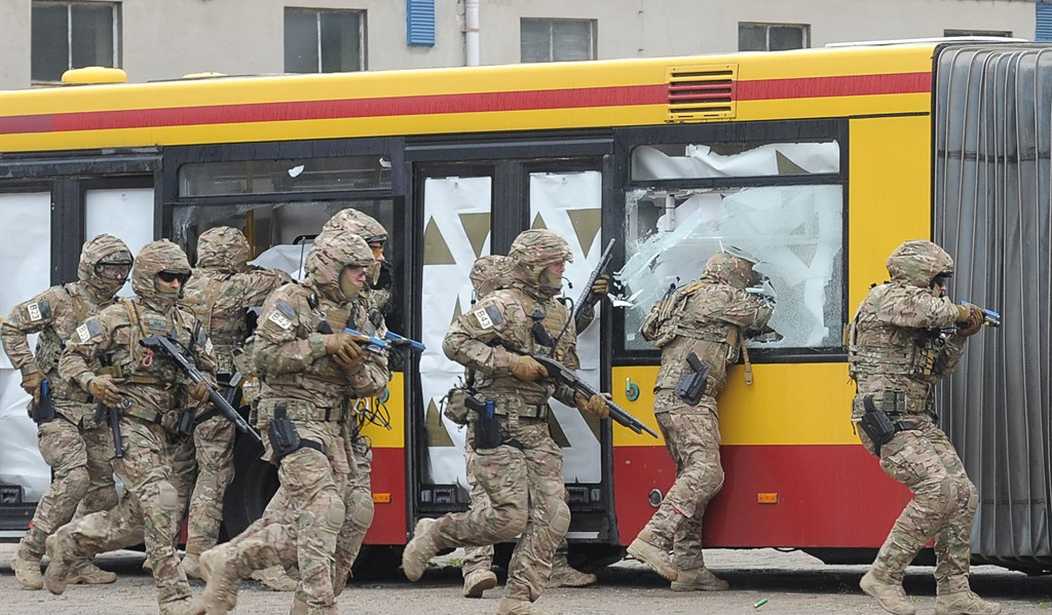NATO military planners want to designate an additional 300,000 troops to be positioned along the eastern edge of the alliance on the border with Russia in order to forestall any thought by Moscow of expanding the war in Ukraine.
There’s only one small problem; they don’t know where they’re going to get the weapons and ammunition.
“The current rate of consumption compared to the current rate of production of ammunition,” NATO Secretary-General Jens Stoltenberg said in early March, “is not sustainable.”
But the problem isn’t just manufacturing bullets and shells. It’s a problem of figuring out how much every NATO nation has to give in men, money, and material. And that has proved difficult in the past.
“If there’s not somebody hosting the potluck and telling everybody what to bring, then everyone would bring potato chips because potato chips are cheap, easy to get,” said James J. Townsend Jr., a former U.S. deputy assistant secretary of defense for European and NATO policy.
“Nations,” he added, “would rather bring potato chips.”
When the NATO alliance went to war in Afghanistan, it was amusing to see many of the countries eagerly volunteering for duty at the Kabul airport. They all wanted to contribute “potato chips” to the war effort. How will this latest effort at demonstrating NATO solidarity work?
But the process could get tricky. Why? Because moving so quickly, even given a month, requires lots of people, equipment and training — and lots of money.
Some militaries will have to up their recruitment efforts. Many allies will have to increase defense spending. And everyone will have to buy more weapons, ammunition and equipment.
Ben Hodges, former commander of U.S. Army Europe, said that “readiness” is “basically, do you have all the stuff you’re supposed to have to do the mission assigned to a unit of a particular size?”
“An artillery battalion needs to shoot X number of rounds per year for planning purposes in order to maintain its level of proficiency,” he said. A tank battalion needs to hit targets, react to different situations and “demonstrate proficiency on the move, day and night, hitting targets that are moving.”
From what we saw of NATO in Afghanistan, I am not confident that this plan to augment forces on the Russian border will amount to much. NATO countries will find ways to avoid their responsibilities rather than fulfill their obligations.
And that includes meeting the critical need for more ammunition.
“We have tended to try to stockpile munitions on the cheap … it’s just grossly inadequate,” said Stacie Pettyjohn, director of the defense program at the Center for a New American Security. “I think the problems that our allies have in NATO are even more acute because many of them often rely on the U.S. as sort of the backstop.”
Sound familiar? Any NATO plan for more troops and equipment ultimately means more U.S. troops and more U.S. equipment.
Once NATO’s military plans are done, capitals will be asked to weigh in — and eventually make available troops, planes, ships and tanks for different parts of the blueprints.
A test for NATO will come this summer when leaders of the alliance’s 30 member countries meet in Lithuania.
“We are asking the nations — based on the findings we have out of our three regional plans — what we need to make these plans … executable,” said the senior NATO military official, who spoke on condition of anonymity to discuss sensitive planning.
“I think the most difficult thing,” the official added, “is the procurement.”
As always, the devil is in the details. But NATO — aside from some frontline nations like Poland and the Baltic States — is not likely to get serious about defense against Russia until Russian tanks are rolling into NATO territory.










Join the conversation as a VIP Member